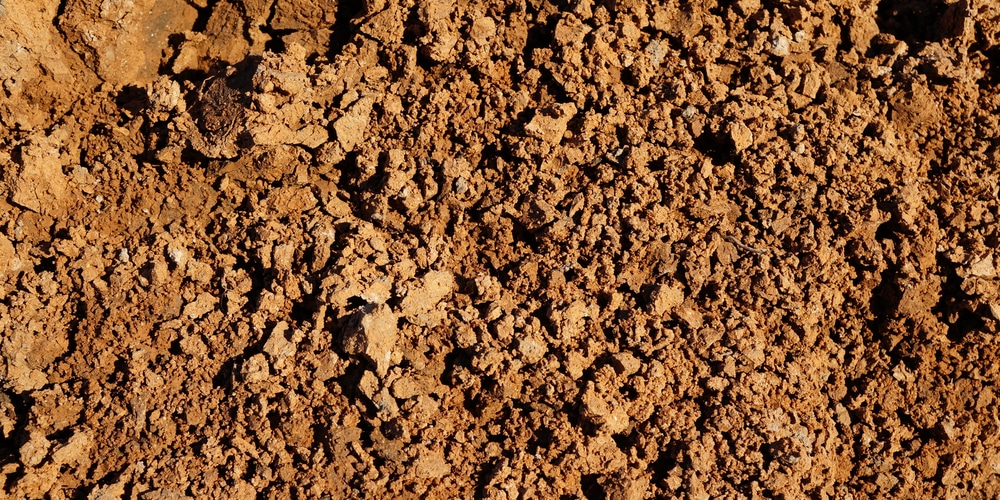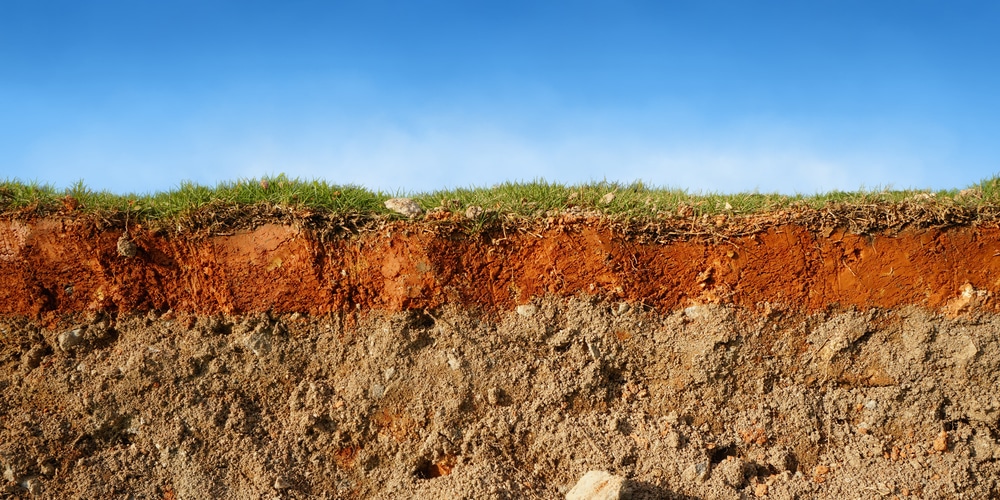Many of the gardening problems that people encounter are based on soil type. Before planting grass seed, the first thing you need to determine is whether your soil is suitable for establishing a new lawn. If you have clay soil, you may find that establishing a lawn or garden is challenging. Let’s look at how to plant grass in clay soil successfully.
The problems with clay soil

It tends to harden when dry and soften when moist. This makes it difficult for plants to penetrate the soil surface.
It can quickly become waterlogged. Poor drainage can cause some types of grass seed to rot, especially in the winter.
More difficult to work with when compared to other soil types. You will need to add compost before planting grass seed in clay soil due to the poor natural structure of clay soils.
Compaction is a significant problem associated with clay soil. This can be caused by nearby construction, compaction from large equipment, and foot traffic.
Clay has a high pH level, which means the soil is alkaline. This will need to be lowered before planting grass seed. Have the soil tested to determine the pH level of your clay soil.
Clay soils tend to be nutrient-deficient, which means you may need to add fertilizer before planting grass seed.
How to plant grass seed in clay soil
First, you need to understand that grass will not grow well in clay soil without some help. The best chance you have of getting grass to grow in clay soil is to use a blend of different types of seed. Don’t just rely on one type or brand; mix them together.
If you live in a colder climate, plant cool-season grasses that can survive the cold, harsh winters. While those in a warm climate will need to use warm-season grasses that can survive droughts and scorching summers. Here are some tips to help you prepare your clay soil for planting:
Prepare the soil
You can mix sand or some other light, free-draining material into the top layer of your clay soil. If you cannot provide this help by digging, then the next best thing is to apply an organic soil amendment. A layer of topsoil will keep the seeds in contact with air and water until they sprout.
The best products for the job are peat moss, composted bark or wood chips, or even decomposed leaves. A mix of all four is ideal because it provides a range of particle sizes to improve your soil. If you are not familiar with the product, you may need to experiment with several soil amendments to find which works best for you.
Aerating your soil can help alleviate some of the above problems by allowing fertilizer, oxygen, and moisture to penetrate the first few inches better. This will reduce pooling, improve root growth, and bring more oxygen into contact with soil micro-organisms.
Spread the grass seeds
Once the top 2 inches of clay soil has been amended, then prepare your grass seedbed. Rake the area until it is smooth, and then evenly spread your seeds. You can scatter them by hand or use a drop-type spreader. Most grass seed mixtures are sold in premeasured bags that will cover 1,000 square feet or more, which should be enough for most average to small-sized lawns.
Water the seeds
The trick is to keep the newly-seeded surface moist at all times. A watering can with a fine rose is best because you want to directly water the soil and not the seed. If you own a sprinkler system, it’s probably better to use that rather than trying to drag around a hose every day.
Water at least once a day for two weeks or until seedlings appear, and continue watering every day until they are established. Keep watering during dry periods throughout the summer. Avoid walking on the seeded lawn, which will damage the young grass plants.
Cut your grass
It’s best to cut your grass two to four weeks after seeding your lawn. This will give the young grass seedlings a chance to grow deep roots and to establish themselves.
Conclusion
Grass seed takes patience to grow. But there are several products on the market for clay soil that will help establish your grass seed faster.
You could put sod over soil. That is an effective way of getting grass on your clay soil.
The first thing you need to know about planting grass seed is that it needs plenty of sunshine and water. Clay soils tend to drain poorly, which means water won’t penetrate well and will create a swampy area after heavy rain or watering your lawn.
Clay soil and grass seed mix poorly because the seed won’t be able to break through, which makes planting grass in clay soil nearly impossible without some help either by way of amendments to the top layer of the soil or grass variety that can grow in clay soil.
